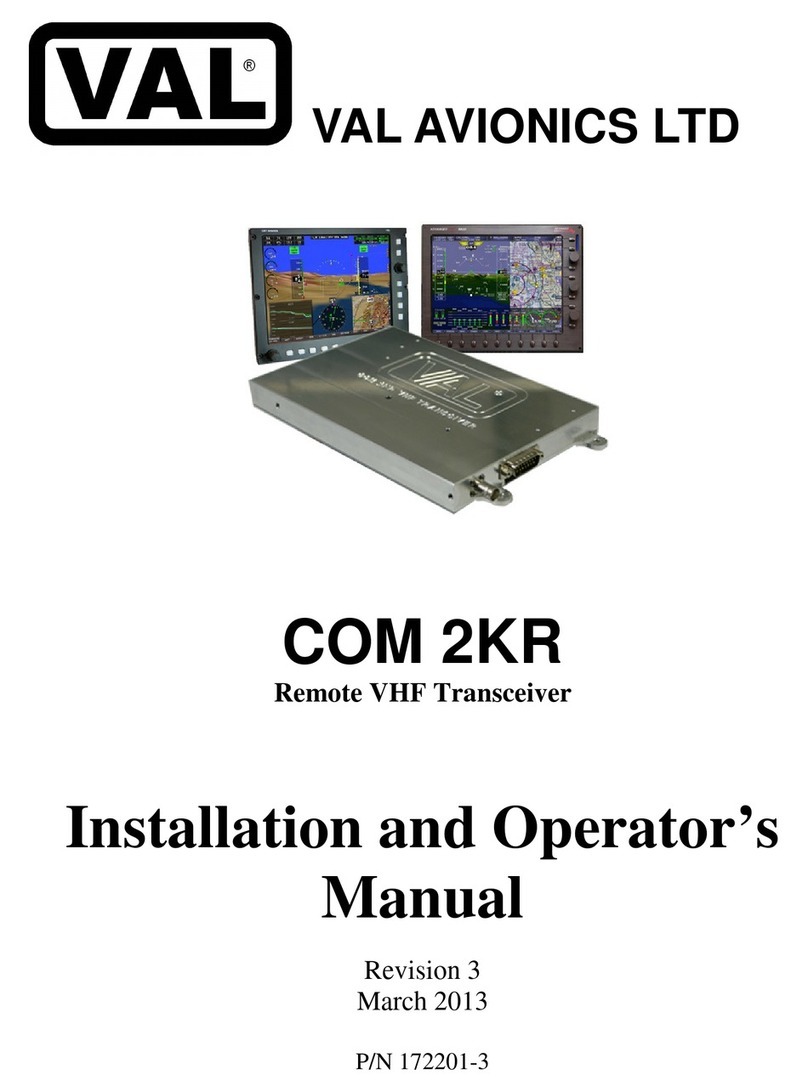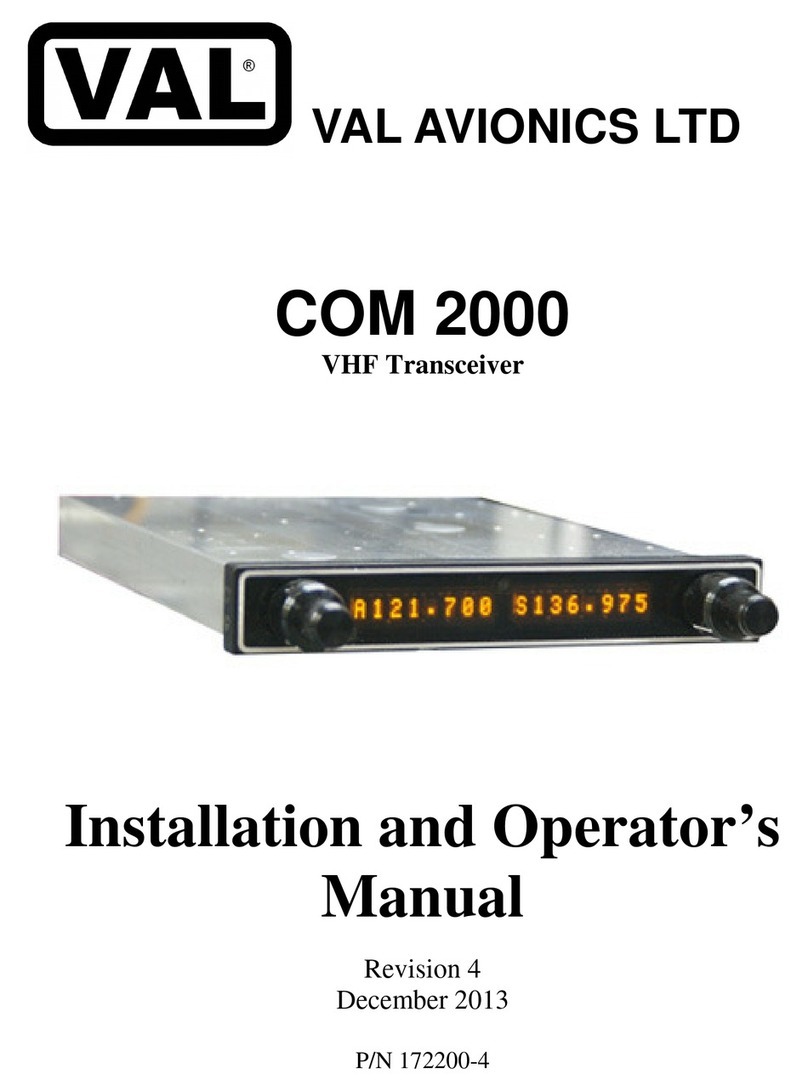
V A L A V I O N I C S L T D
C O M 2 0 0 0 – V H F T R A N S C E I V E R
I N S T A L L A T I O N A N D O P E R A T O R ’ S M A N U A L
Revision 3 Page 3 of 31
March 2013
Table of Contents
1
SECTION I - GENERAL INFORMATION 4
1.1
INTRODUCTION...........................................................................................................................................4
1.2
SCOPE ............................................................................................................................................................4
1.3
EQUIPMENT DESCRIPTION.......................................................................................................................4
1.4
FCC Emission Band ........................................................................................................................................5
1.5
SPECIFICATIONS .........................................................................................................................................6
1.6
EQUIPMENT SUPPLIED ..............................................................................................................................7
1.7
EQUIPMENT REQUIRED BUT NOT SUPPLIED .......................................................................................7
1.8
LICENSE REQUIREMENTS.........................................................................................................................7
2
SECTION II - INSTALLATION 8
2.1
GENERAL INFORMATION .........................................................................................................................8
2.1.1
Scope .....................................................................................................................................................8
2.2
UNPACKING AND INSPECTION................................................................................................................8
2.3
EQUIPMENT INSTALLATION PROCEDURES .........................................................................................8
2.3.1
Cooling Requirements ...........................................................................................................................8
2.3.2
Mounting Requirements ........................................................................................................................8
2.3.3
Wire Harness Fabrication ......................................................................................................................9
2.3.4
COM 2000 Installation ..........................................................................................................................9
2.4
POST INSTALLATION CHECK...................................................................................................................9
2.4.1
Operational Check ...............................................................................................................................10
2.4.2
Final Inspection ...................................................................................................................................10
2.5
LIMITATIONS .............................................................................................................................................10
3
SECTION III - OPERATION 11
3.1
GENERAL INFORMATION .......................................................................................................................11
3.1.1
Scope ...................................................................................................................................................11
3.1.2
Display Functions ................................................................................................................................11
3.1.3
User Controls .......................................................................................................................................11
3.2
System Configuration....................................................................................................................................13
3.2.1
Accessing Setup Functions ..................................................................................................................13
4
SECTION IV - WARRANTY AND SERVICE 14
4.1
LIMITED WARRANTY ..............................................................................................................................14
4.2
SERVICE ......................................................................................................................................................14
5
Appendix A – INSTALLATION DRAWINGS AND CONNECTOR LAYOUT 15
6
Appendix B – WIRING DIAGRAMS 18
7
Appendix C – Certifications 19
7.1
TSO Certification: .........................................................................................................................................19
8
Appendix D – INSTRUCTIONS FOR CONTINUED AIRWORTHINESS 20
8.1
MAINTENANCE INSTRUCTIONS............................................................................................................20
Table 1: Specifications .................................................................................................................................. 6
Table 2: Equipment Supplied ........................................................................................................................ 7
Table 3: Equipment Not Supplied ................................................................................................................. 7
Table 4: Rear Connector Pin Functions....................................................................................................... 17
Figure 1: Unit Controls................................................................................................................................ 11
Figure 2: Physical Dimensions .................................................................................................................... 16
Figure 3: P1 Connector Pin Out................................................................................................................... 16
Figure 4: Panel Cut Out ............................................................................................................................... 16
Figure 5: Mounting Tray Assembly Exploded View................................................................................... 16
Figure 6: COM 2000 Basic Wiring Diagram................................................................................................ 18
Figure 7: Interface with AP100 .................................................................................................................... 18





























